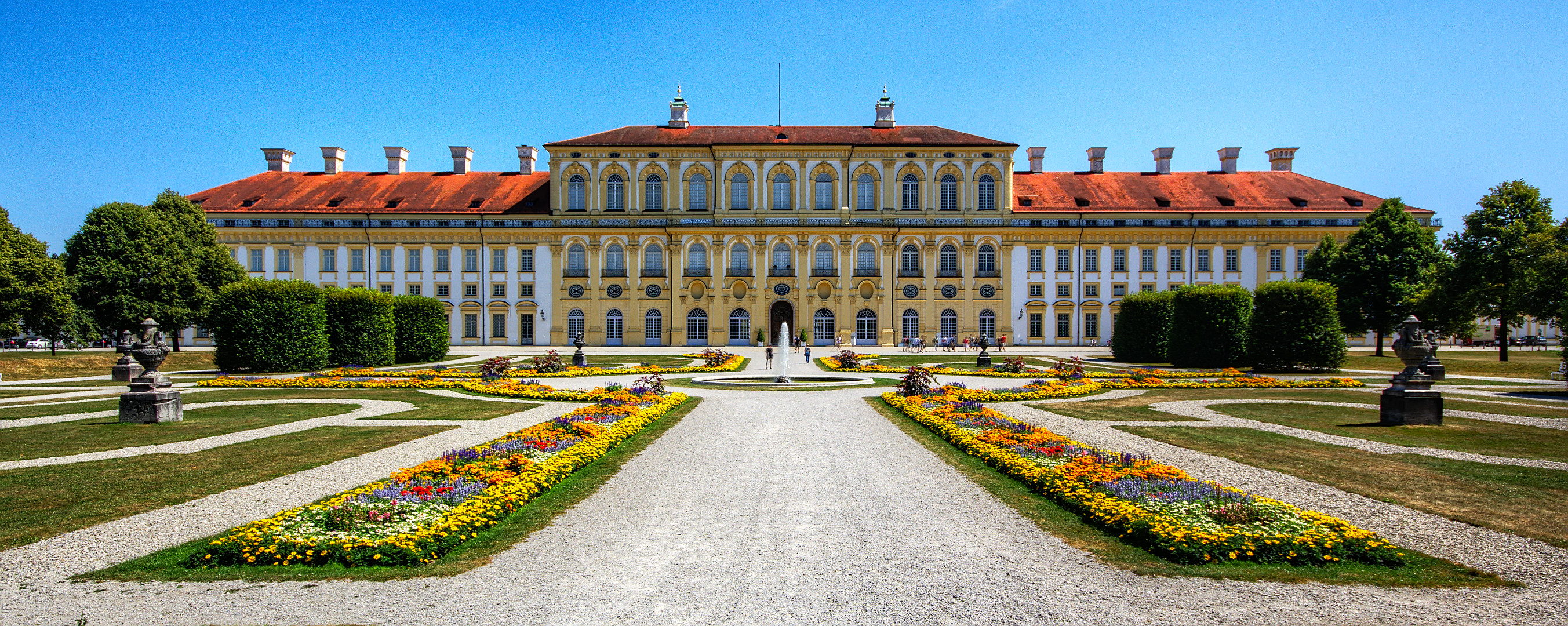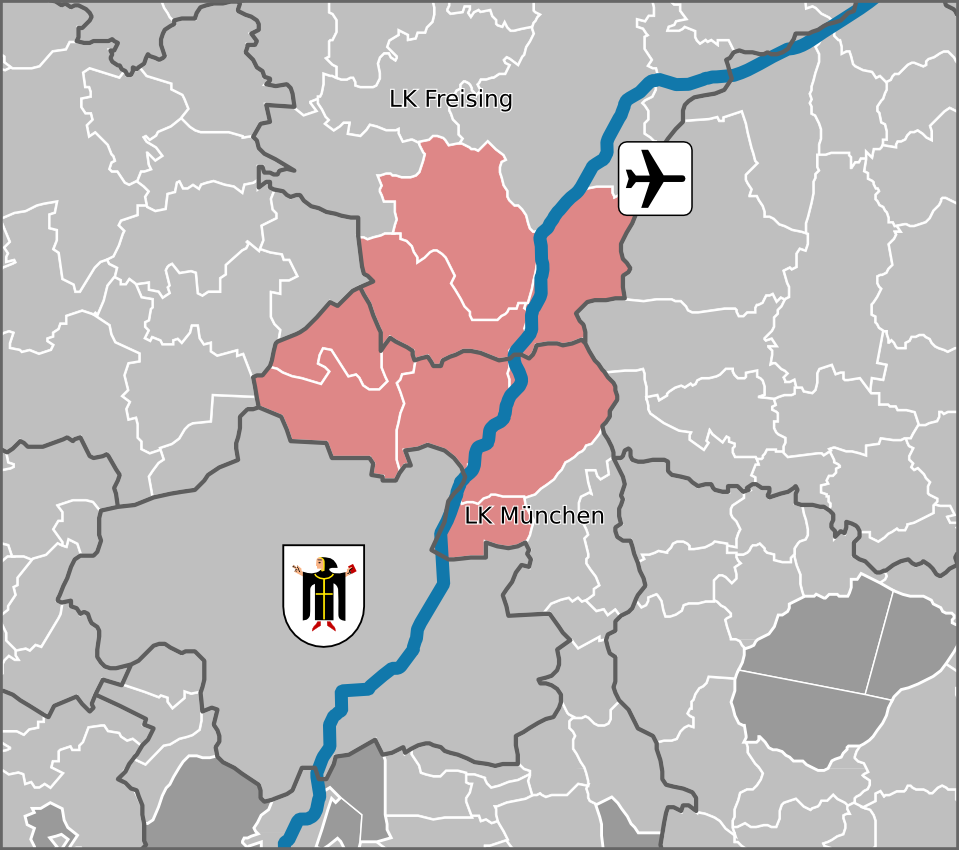|
Oberschleißheim
Oberschleißheim () is a Municipalities of Germany, municipality in the Munich (district), district of Munich, in Bavaria, Germany. It is located 13 km north of Munich (centre). As of 2005 it had a population of 11,467. Oberschleißheim is best known for the Schleissheim Palace and the Flugwerft Schleissheim next to the airport housing the airplane department of the Deutsches Museum, German Museum. The airfield is also home to one of the five German Federal Police helicopter squadrons. Established in 1912, the airfield was the first in Bavaria. During World War II, a subcamp of Dachau concentration camp was located here. In the early 20th century, Schleißheim was home to author Waldemar Bonsels, who was inspired to write his "Biene Maja" by a gnarly tree in the woods nearby. History Schleißheim was first mentioned as “Sliusheim” in 785. The small church of St. Martin in Mallertshofen is a Romanesque church which still exists. In the Year 1315 the name of the villag ... [...More Info...] [...Related Items...] OR: [Wikipedia] [Google] [Baidu] |
Flugplatz Schleißheim
The Flugplatz Schleißheim (the part of the site used today as an airfield is called Sonderlandeplatz Oberschleißheim) is an airfield in the Bavarian town of Oberschleißheim near Munich (about 13 km north of the city center), in the Jägerstraße 1. It is the oldest still operating airfield in Germany, which was planned as a military airfield. History of the airport The airfield was founded in 1912 for the Royal Bavarian Air Force. A subdivision was located at the Gersthofen/Gablingen airfield. Because of the proximity to '' Schloss Schleißheim'', all airfield buildings were built in the "reduced home style". After the First World War, the airfield was used for civilian purposes until 1933, initially as a technical base for the beginning civilian air traffic, from 1927 it was mainly used for pilot training. NS period and Second World War After the NSDAP seized power, it was expanded into an air base of the ''Luftwaffe'' (Air Force) in the course of the National Soci ... [...More Info...] [...Related Items...] OR: [Wikipedia] [Google] [Baidu] |
Schleissheim Palace
The Schleißheim Palace (german: Schloss Schleißheim) comprises three individual palaces in a grand Baroque park in the village of Oberschleißheim, a suburb of Munich, Bavaria, Germany. The palace was a summer residence of the Bavarian rulers of the House of Wittelsbach. The palaces Old Schleissheim Palace The history of Schleißheim Palace started with a Renaissance country house (1598) and hermitage founded by William V close to Dachau Palace. The central gate and clock tower between both courtyards both date back to the first building period. The inner courtyard is called ''Maximilianshof'', the outer one ''Wilhelmshof''. Under William's son Maximilian I the buildings were extended between 1617 and 1623 by Heinrich Schön and Hans Krumpper to form the so-called Old Palace. This plan is typologically similar to the castle of Laufzorn in Oberhaching begun by Maximilian's brother Albert the year before. There, too, a free staircase leads up to the first floor, which is us ... [...More Info...] [...Related Items...] OR: [Wikipedia] [Google] [Baidu] |
Rowing At The 1972 Summer Olympics ...
Rowing at the 1972 Summer Olympics featured 7 events, all for men. It was the last time that rowing did not include women's disciplines at the Olympics. Participating nations A total of 440 rowers from 35 nations competed at the Munich: * (18) * (16) * (16) * (5) * (1) * (2) * (8) * (16) * (1) * (7) * (21) * (12) * (26) * (3) * (18) * (17) * (15) * (1) * (21) * (3) * (9) * (21) * (19) * (6) * (16) * (16) * (3) * (9) * (26) * (1) * (17) * (26) * (3) * (26) * (15) Medal table Medal summary Men's events References External links International Olympic Committee medal database {{Rowing at the Summer Olympics 1972 Summer Olympics events 1972 Within the context of Coordinated Universal Time (UTC) it was the longest year ever, as two leap seconds were added during this 366-day year, an event which has not since been repeated. (If its start and end are defined using Solar time, me ... [...More Info...] [...Related Items...] OR: [Wikipedia] [Google] [Baidu] |
Munich
Munich ( ; german: München ; bar, Minga ) is the capital and most populous city of the States of Germany, German state of Bavaria. With a population of 1,558,395 inhabitants as of 31 July 2020, it is the List of cities in Germany by population, third-largest city in Germany, after Berlin and Hamburg, and thus the largest which does not constitute its own state, as well as the List of cities in the European Union by population within city limits, 11th-largest city in the European Union. The Munich Metropolitan Region, city's metropolitan region is home to 6 million people. Straddling the banks of the River Isar (a tributary of the Danube) north of the Northern Limestone Alps, Bavarian Alps, Munich is the seat of the Bavarian Regierungsbezirk, administrative region of Upper Bavaria, while being the population density, most densely populated municipality in Germany (4,500 people per km2). Munich is the second-largest city in the Bavarian dialects, Bavarian dialect area, ... [...More Info...] [...Related Items...] OR: [Wikipedia] [Google] [Baidu] |
Nordallianz
The NordAllianz - Metro Region Munich North (German: ''NordAllianz - Metropolregion München Nord'') is a group of 8 towns situated between the city of Munich and Munich Airport. Its members are Eching, Garching, Hallbergmoos, Ismaning, Neufahrn, Oberschleißheim, Unterföhring, and Unterschleißheim. Originally created to lobby against the establishment of unwanted facilities such as landfills or power plants on the territory of its members, NordAllianz is now promoting the region as a centre for business, science and living. Demographics The total population of NordAllianz is between 115 and 200 inhabitants. Colleges, Universities and Research Facilities Garching hosts a large science and research campus, where several Departments of the Technical University of Munich (TUM), parts of the Department of Physics of Munich University (LMU), several Max Planck Institutes, and other research facilities are located. ''See Garching#Educational and research institutes.'' Obersch ... [...More Info...] [...Related Items...] OR: [Wikipedia] [Google] [Baidu] |
Deutsches Museum
The Deutsches Museum (''German Museum'', officially (English: ''German Museum of Masterpieces of Science and Technology'')) in Munich, Germany, is the world's largest museum of science and technology, with about 28,000 exhibited objects from 50 fields of science and technology. It receives about 1.5 million visitors per year. The museum was founded on 28 June 1903, at a meeting of the Association of German Engineers (VDI) as an initiative of Oskar von Miller. It is the largest museum in Munich. For a period of time the museum was also used to host pop and rock concerts including The Who, Jimi Hendrix and Elton John. Museumsinsel The main site of the Deutsches Museum is a small island in the Isar river, which had been used for rafting wood since the Middle Ages. The island did not have any buildings before 1772 because it was regularly flooded prior to the building of the Sylvensteinspeicher. In 1772 the Isar barracks were built on the island and, after the flooding of ... [...More Info...] [...Related Items...] OR: [Wikipedia] [Google] [Baidu] |
Schloss Oberschleissheim-wikipedia
''Schloss'' (; pl. ''Schlösser''), formerly written ''Schloß'', is the German term for a building similar to a château, palace, or manor house. Related terms appear in several Germanic languages. In the Scandinavian languages, the cognate word ''slot''/''slott'' is normally used for what in English could be either a palace or a castle (instead of words in rarer use such as ''palats''/''palæ'', ''kastell'', or ''borg''). In Dutch, the word ''slot'' is considered to be more archaic. Nowadays, one commonly uses ''paleis'' or ''kasteel''. But in English, the term does not appear, for instance, in the United Kingdom, this type of structure would be known as a stately home or country house. Most ''Schlösser'' were built after the Middle Ages as residences for the nobility, not as true fortresses, although originally, they often were fortified. The usual German term for a true castle is ''burg'', that for a fortress is ''festung'', and — the slightly more archaic term — ... [...More Info...] [...Related Items...] OR: [Wikipedia] [Google] [Baidu] |
Munich (district)
Munich (german: Landkreis München) is a ''Landkreis'' (district) in Bavaria, Germany. It borders (from the north and clockwise) the districts of Dachau, Freising, Erding, Ebersberg, Rosenheim, Miesbach, Bad Tölz-Wolfratshausen, Starnberg, Fürstenfeldbruck, and almost encircles (except for the west and northwest sides) district-free city Munich itself, which is the district seat. History The history of the region is connected to the city of Munich. The district was established in 1852 and underwent several changes due to the ongoing incorporation of municipalities into the city of Munich. In 1972 the constant shrinking of the district was compensated by adding nine municipalities from the former district of Wolfratshausen. Geography The district is located in the east and the south of the city Munich, mostly covering the moraine plain around Munich. In the south of the district the foothills of the Alps start, which also contain the highest elevation of the district, two hi ... [...More Info...] [...Related Items...] OR: [Wikipedia] [Google] [Baidu] |
Bundesamt Für Strahlenschutz
The Bundesamt für Strahlenschutz (BfS) is the German Federal Office for Radiation Protection. The BfS was established in November 1989; the headquarters is located in Salzgitter, with branch offices in Berlin, Bonn, Freiburg, Gorleben, Oberschleißheim and Rendsburg. It has 708 employees (including 305 scientific) and an annual budget of around 305 million Euro (2009). Since 2009 the BfS is also responsible for the storage site of radioactive waste, Schacht Asse II. History Against the background of the Chernobyl nuclear disaster in April 1986 and the so-called transnuclear scandal in 1987, the BfS was founded with the aim of re-bundling competencies and responsibilities in the field of radiation protection. The following organizational units were merged into the BfS: * Department "Securing and Disposal of Radioactive Waste" (SE), Physikalisch-Technische Bundesanstalt, Braunschweig * Institute for Atmospheric Radioactivity (IAR), Federal Office for Civil Protection, Freiburg * ... [...More Info...] [...Related Items...] OR: [Wikipedia] [Google] [Baidu] |
German Federal Police
The Federal Police (''Bundespolizei'' or BPOL) is the national and principal federal law enforcement agency of the German Federal Government, being subordinate to the Federal Ministry of the Interior, Building and Community (''Bundesministerium des Innern, für Bau und Heimat (BMI)''). The Federal Police is primarily responsible for border protection and railroad and aviation/air security. In addition, the agency is responsible, among other tasks, for the protection of federal constitutional bodies. It provides the federal alert police and GSG 9 special police unit, which can also be used to support the federated states of Germany. Ordinary police forces, meanwhile, are under the administration of the individual German states ('' Bundesländer'') and are known as the '' Landespolizei''. In addition to the Federal Police, the Federal Criminal Police Office and the German Parliament Police exist as further police authorities at the federal level. The ''Bundespolizei'' was named ' ... [...More Info...] [...Related Items...] OR: [Wikipedia] [Google] [Baidu] |




